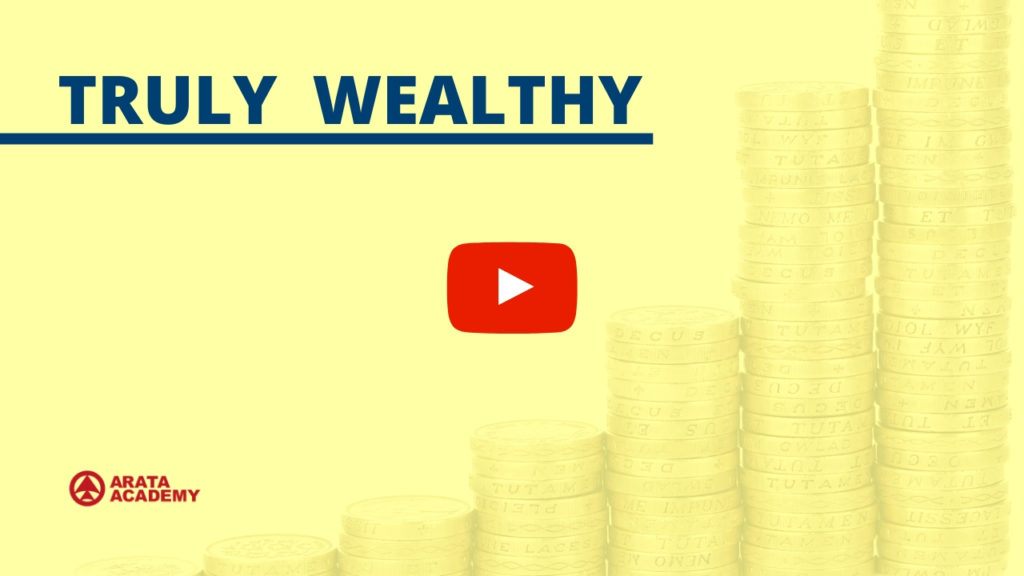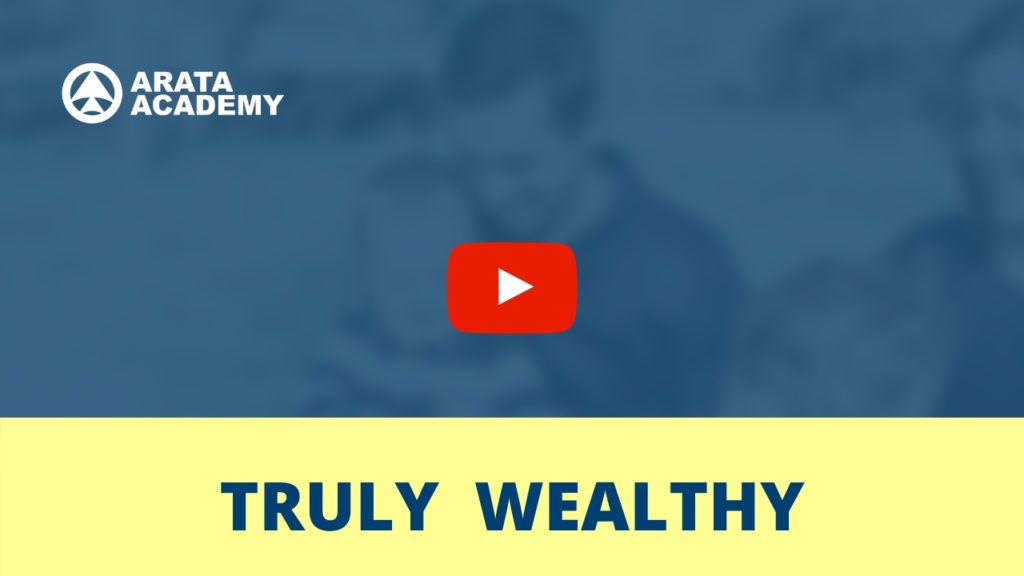This is how to get out of debt in nine simple steps.
Step 1: Adapt your budget to help you get out of debt
To get out of debt, the first thing to do is to make a financial plan. This plan should begin by focusing on your household budget.
For example, let’s say that fifty percent of your budget goes towards your rent, and that another ten percent goes towards each of the following areas: education, entertainment, charitable donations, investments and long-term expenditure.
This would be a good budget if you weren’t in debt. However, as long as you’re in debt, the distribution of your budget should be modified so that you can pay off your debts as quickly as possible.
Firstly, highlight the expenses in your budget that you can get rid of without implicating your standard of living too much. For example, you could keep the fifty percent of your budget devoted to paying your rent and bills. You could also keep using ten percent of your budget to pay for education, as long as it’s a course that can’t be reimbursed or given up, like university or your children’s education.
But the other forty percent that’s left over from our example should be used towards paying off your debt. It might be difficult, but it can’t be helped. If you’re in debt, it doesn’t make much sense to spend money on entertainment, charitable donations, investing or long-term expenses.
This doesn’t mean that you can’t enjoy yourself or give back to your community. You’ll just have to be more creative in terms of finding ways to enjoy yourself and to contribute without spending money.
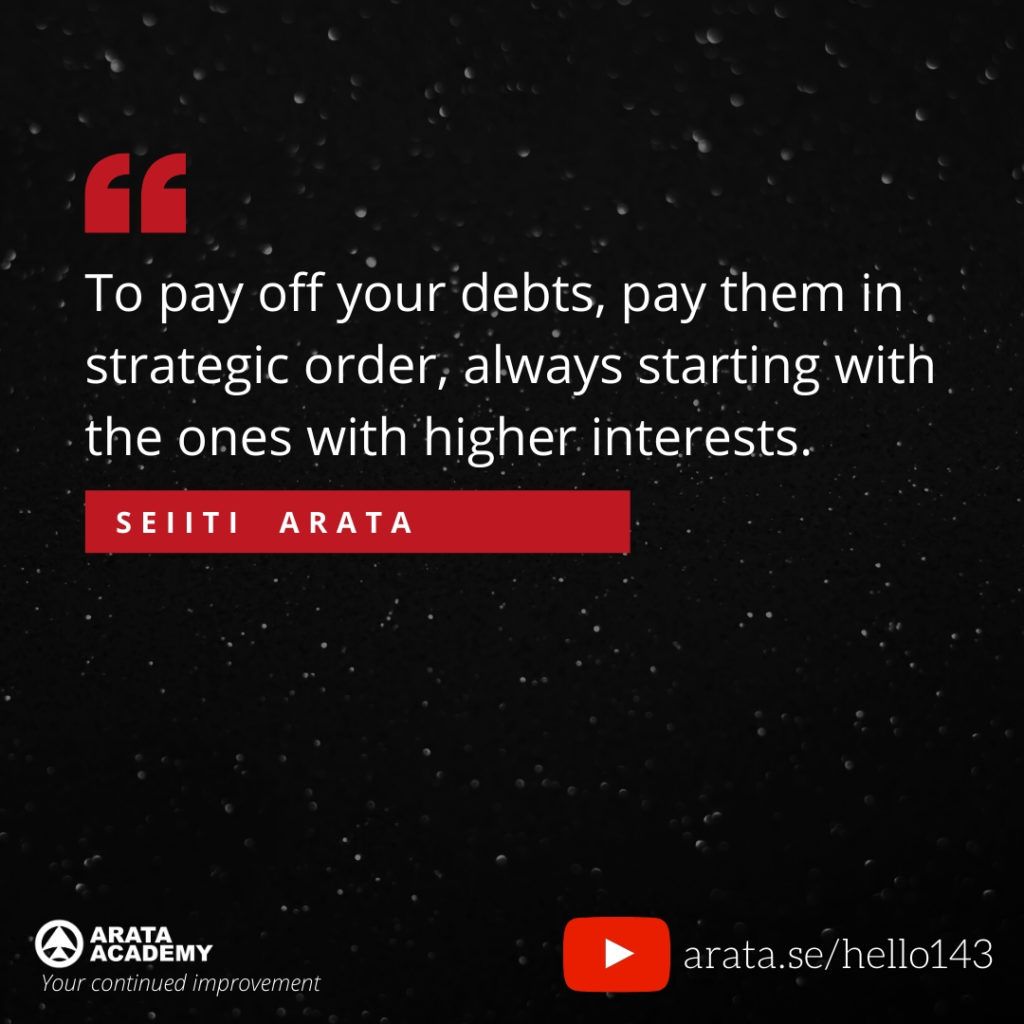
It also wouldn’t make sense to keep investing ten percent of your budget a month, because the interest rates of investments can be even higher than the interest rates of debt.
Don’t try to save money while you’re paying off debt
One of the main mistakes people make is to keep trying to save money while they’re also trying to pay off their debts.
It’s common to see people that keep putting money into low-risk and low-return investments at the same time as trying to pay off their debts, which have high interest rates.
It doesn’t make sense to keep paying high interest rates if you have the money to pay off your debts. What’s worse is when people get a very little return on their investments. But why do people behave in such an irrational way? It’s because they have a very low level of financial education.
Stop your debts from snowballing out of control
As a snowball rolls down the side of a mountain, it increases in size and becomes more and more uncontrollable. If you’re not careful, the same thing can happen with your debts because of the high interest rates.
This means that the best thing to do first is to stop the snowball in its tracks.
When you’re in debt, it’s important to take the age-old advice of spending less than you earn seriously. The difference that you save can be used to stop your debts from growing.

Have a personal review. Are you financially prepared enough to use a credit card? If you don’t know how to control your money, it might be best that you cancel your credit card.
For some people, it might even be best to use cash to pay for everything, and to divide the money up into envelopes to be spent on rent, transport, food, and other essential expenses.
Any money going towards expenses that aren’t absolutely essential should be used towards paying off the debt.
Step 2: Make a list of all your debts
The second step to paying off your debts is quite simple.
You should make a spreadsheet and list all of your debts, including the following details:
- How you got into the debt
- Who you owe the debt to
- The monthly interest rates on the debt
- If the possibility of negotiating the interest rate is low, medium or high
All of this information will prove very useful in step three, in which you will build your strategy that will define which debts you will focus on paying off first.
Step 3: Order your debts from most expensive to cheapest
The third step is to put your debts in order, from the most expensive to the cheapest. What I mean by this is that you should prioritise paying off the debts with high monthly interest rates over those with low monthly interest rates.
Be aware that here we’re talking about the monthly interest on the debt, not the amount of the debt itself.
In other words, to work out which debt is the most expensive to pay off, check which has the highest monthly interest rate.
Step 4: Negotiate minor interest rates with each lender
Next, with your detailed spreadsheet at hand, get in touch with each lender, each person or company that you owe money to, and try to negotiate with them.
Firstly, follow up on the loan sharks of the most expensive debts that you owe. Move onto the next lender, until you negotiate the debt with the lowest monthly interest rate.
This is the time that you’ll have to recognise your financial mistakes and try to negotiate your debts. Explain your repayment plan, show them the documents that you’ve prepared and show them how much you can afford to pay off each month.
Depending on the case, most lenders agree to waiver the interest, because they are at least making the money back that they initially loaned out.
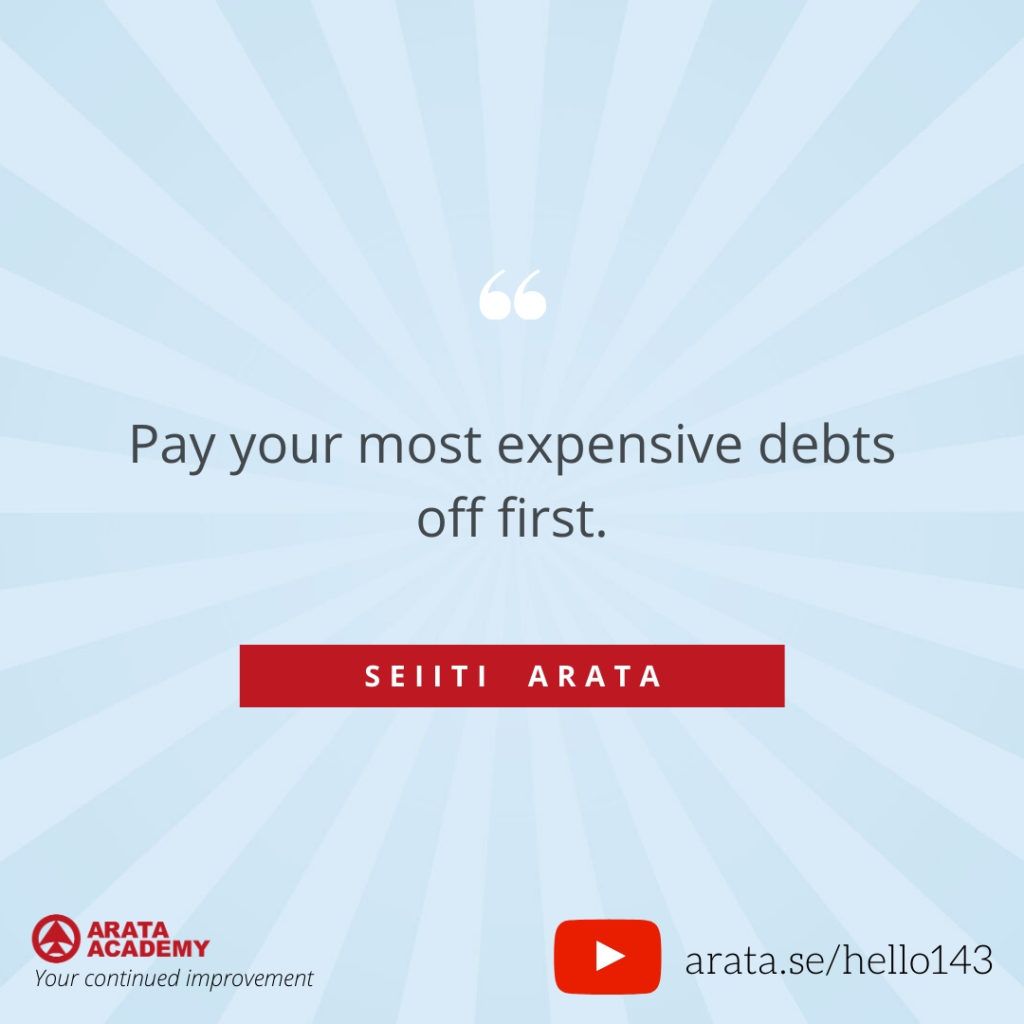
You’ve already had the “no”. At the very least, all that asking will get you is a bit of a discount on your debt. It will really help in the long run.
After this round of negotiations, use your spreadsheet to calculate how much debt you have left, including the discounts that you might have managed to negotiate.
Step 5: Update your outstanding balance and work out your average interest rate
The fifth step is to update your outstanding balance and make a weighted average of the interest rates on all of your debts.
Any spreadsheet programme can calculate a weighted average. It’s important to consider the weight of each debt in relation to the total amount that you owe.
This information is essential for the next step: unifying your debts.
Step 6: Unifying your debts
With the total debt you owe after your discounts, look for a bank that will offer you a loan for the full amount of your outstanding balance.
You should pay particular attention to the interest on this loan and make sure that it doesn’t outweigh the weighted average of interest of all your other loans. Ideally, the loan you take out will have the lowest interest rate possible.
You could even ask your bank to buy your debts off of you, instead of loaning you the money to pay them off yourself.
Step 7: Pay all of your debts off using your new loan
With the money that the bank has leant you, pay off all of your lenders immediately. This will leave you with one, larger debt; the one that the bank loaned you.
Although you will still have the same outstanding balance, you’ll only have to worry about paying off one lender.
As well as this, you’ve swapped a handful of random debts for one single, cheaper debt, that is, with lower interest rates.
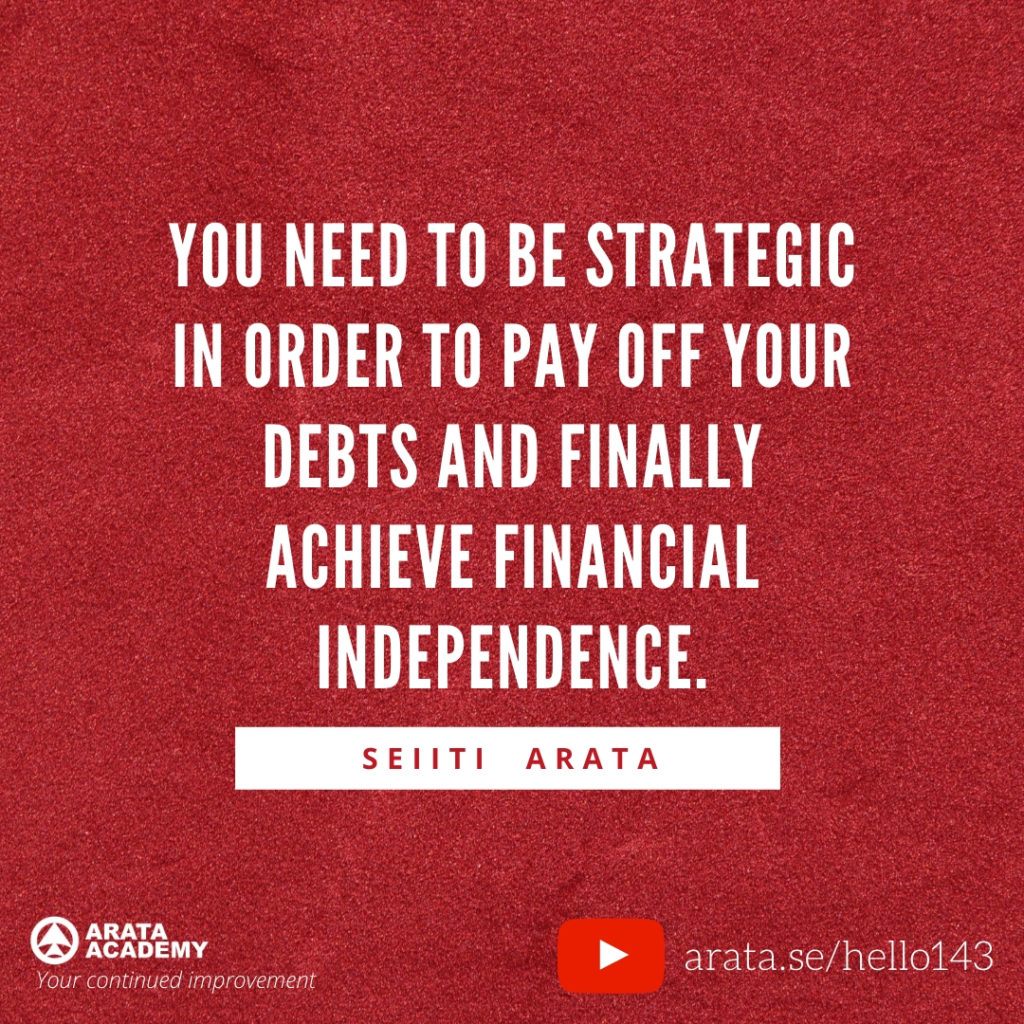
This is a very important step in the process because it lies at the very core of this strategy.
Here’s the logic: it is better to exchange numerous debts with various creditors and different interest rates for a debt with a single lender and one average interest rate. Once you’ve understood this logic, you’ll be ready to move onto step eight.
Step 8: Negotiate the payment of the unified debt
The penultimate step of this strategy is to negotiate again.
Now that you have a unified debt with the bank, you can negotiate smaller installments that fit the target percentage of your household budget better.
If you receive a fixed salary every month, you can even get in touch with your bank and ask them to set up a standing order for a certain amount to be charged towards your debt repayment on the day that your salary gets paid.
This might all seem like a lot of work, but compared to paying different interest rates on different loans indefinitely, it’s a walk in the park. This way you can stop worrying, have a bit of freedom and stop wasting your time with multiple different lenders.
Unifying your debts isn’t always worth the hassle
In some situations, unifying your debts isn’t worth the hassle.
For example, unifying your debts might not be useful if you only owe debt to one lender and their interest rates are lower than the ones that the bank is offering.
Or if the interest rates offered by the bank are higher than the weighted average of all of the interest rates for your current debts.
In this case, you could just unify the debts that are the most expensive to pay off, and borrow money to pay those off with lower interest rates. Meanwhile, you could keep the separate debts with low interest rates as they are.
There is yet another exception to this step, which is when no bank agrees to lend you money at a lower interest rate than you have with your current creditors.
In any case, you should try to negotiate with your lenders and your bank to try and lower the interest rates.
If you can’t unify your debts, you should focus on paying the most expensive debts off first. When the most expensive debt is paid off, move on to the next debt and so on until they’re all paid off.
Make sure that you’re paying off the most expensive debts, not the ones that you’ve had longest. For example, financing a car can last for years, but it can have a lower interest rate than a credit card.
Don’t compromise your financial plan by paying off the car’s longer debt while letting the more expensive credit card debt snowball.
If you don’t know how to do these calculations, ask someone who does.
Look for people you can really trust. Avoid asking for help from people who might have a conflict of interest, such as loan sharks, lending companies or bank managers who have bank products to sell.
Ideally, you could hire an independent accountant or a debt consultant. You could even ask a friend that understands more about saving than you do, and that could help you to get out of debt.
Step 9: During this whole process, make an effort to earn more and spend less
The last step, in all honesty, is one that you should try to carry out throughout the whole process.
Because interest rates are always working against you, the quicker you pay off your debts, the better. This means that the more money you make, the faster it will be to pay off your debts.
If you need to, you could sell some things that you don’t use anymore. You can sell almost anything on the internet nowadays, from used clothes and electronic equipment to antique furniture.
Another way to make some extra money is to get another job, maybe as a freelancer. This way, you could also work outside of your current work schedule.
Be creative and try to think of new ways to make money, as long as you don’t end up taking on more debts, specially credit card debts.
